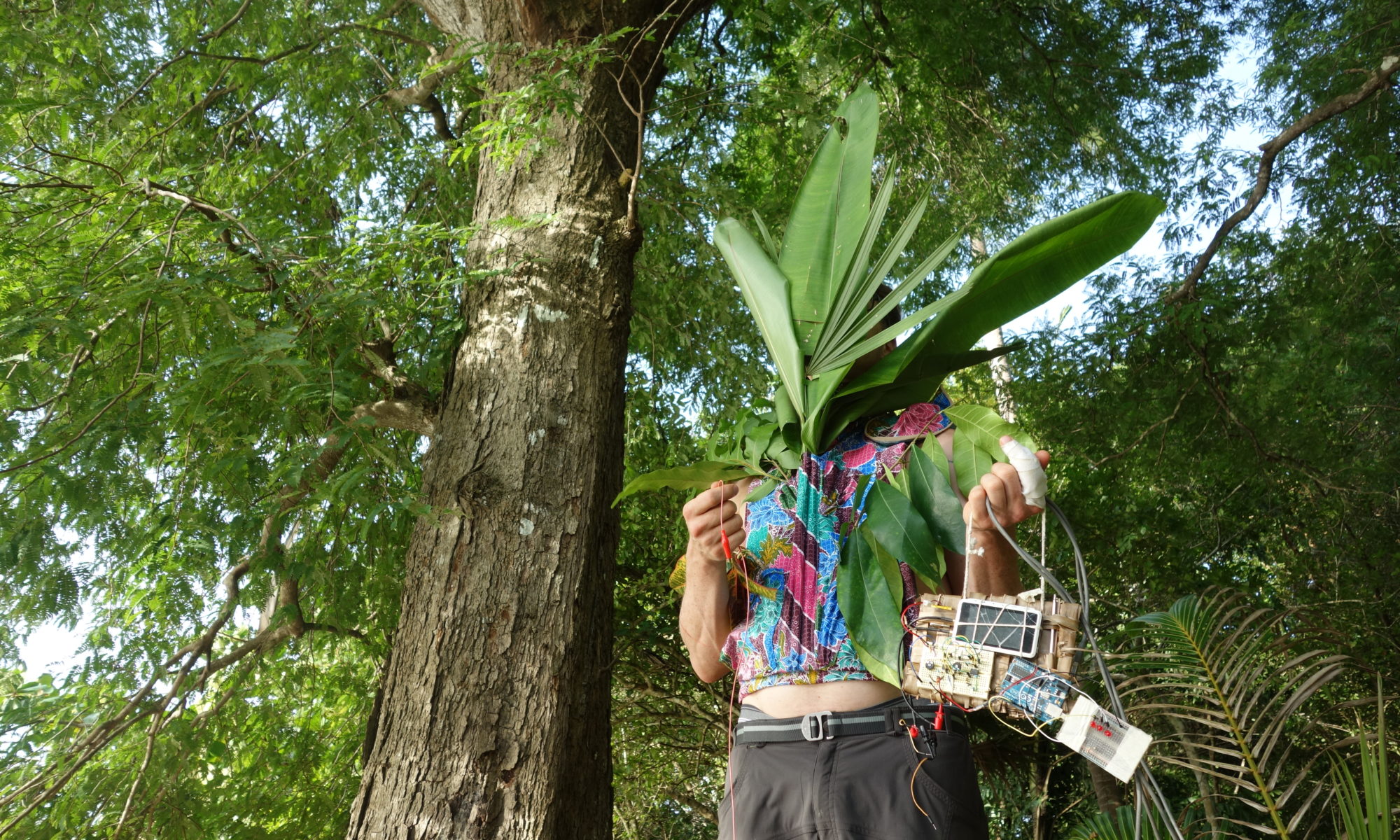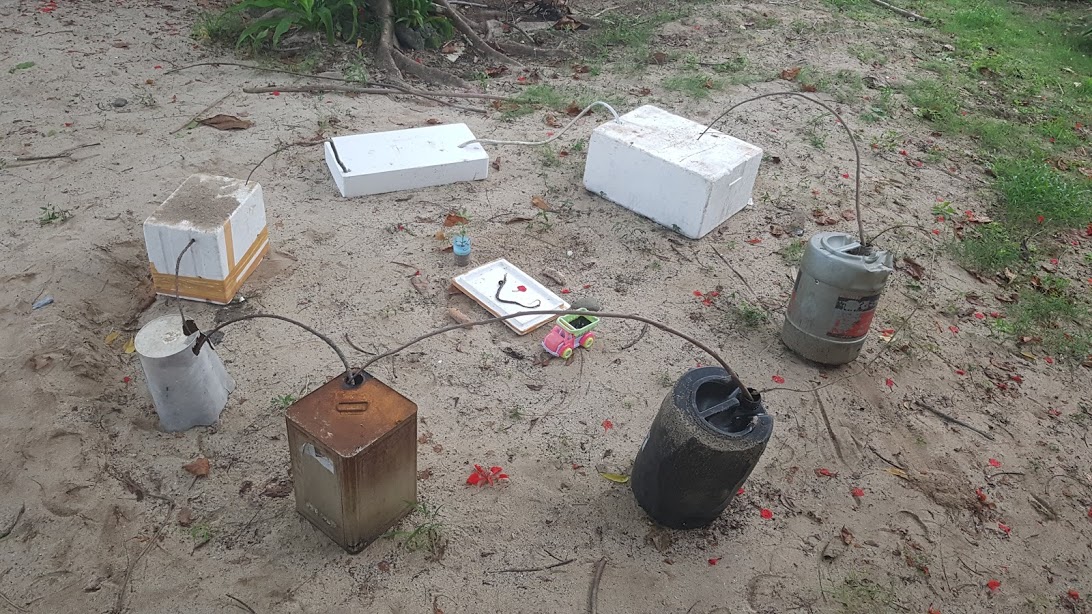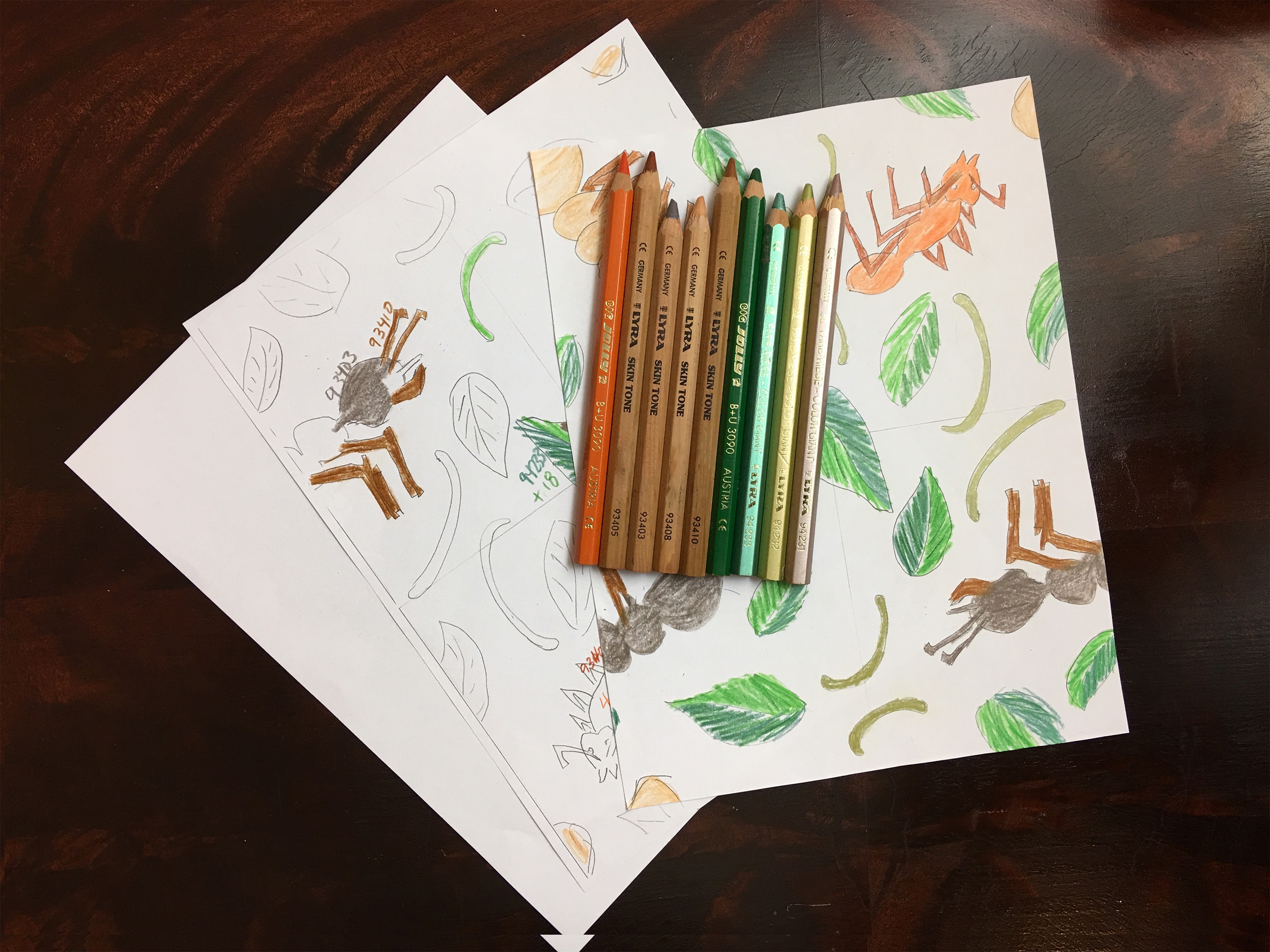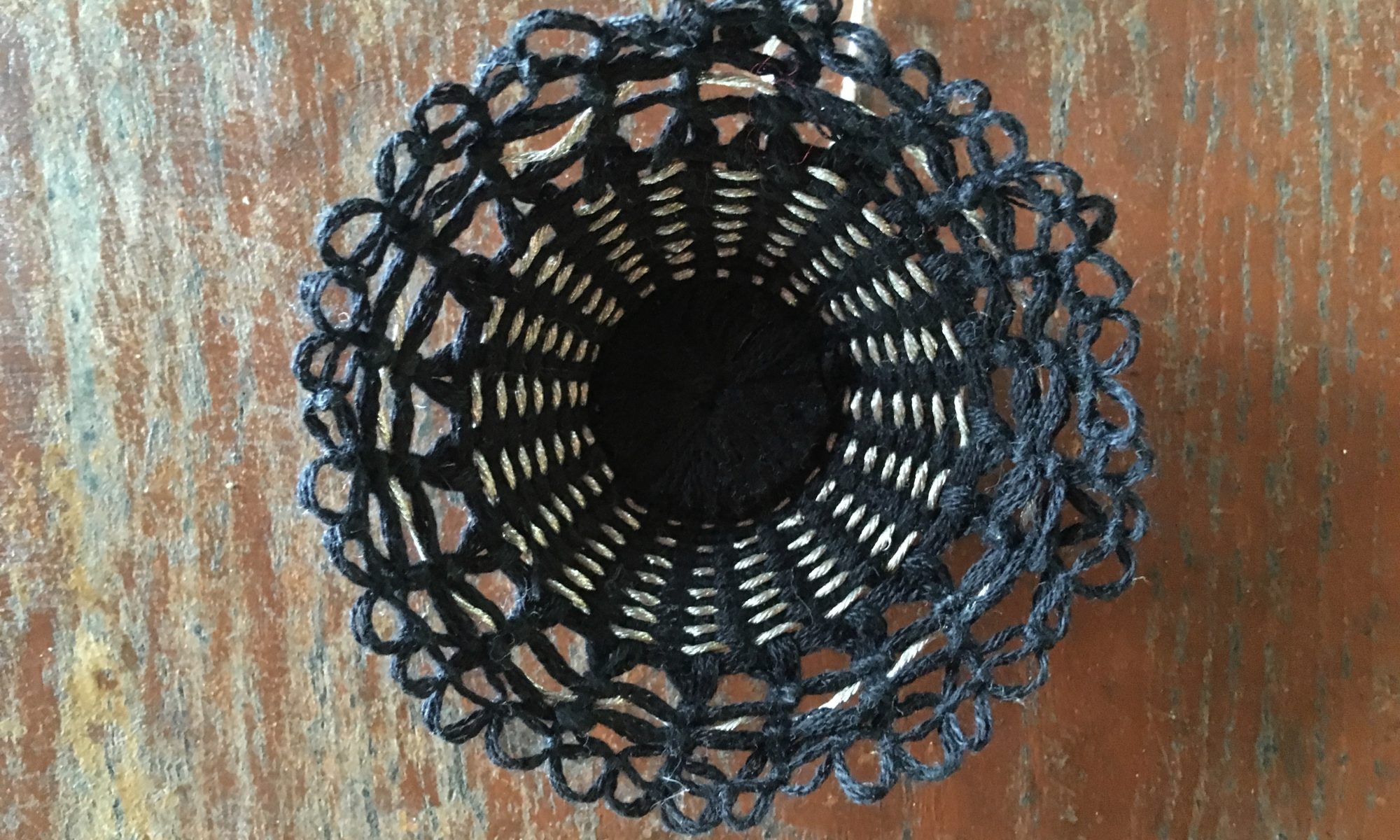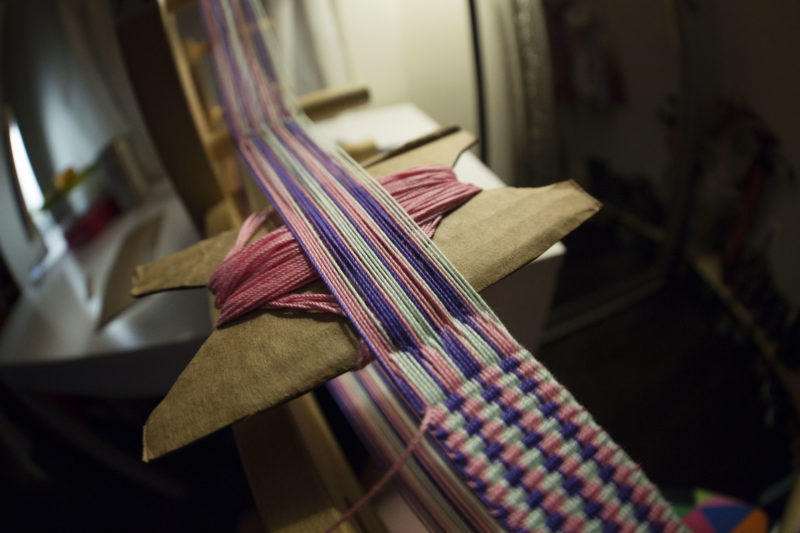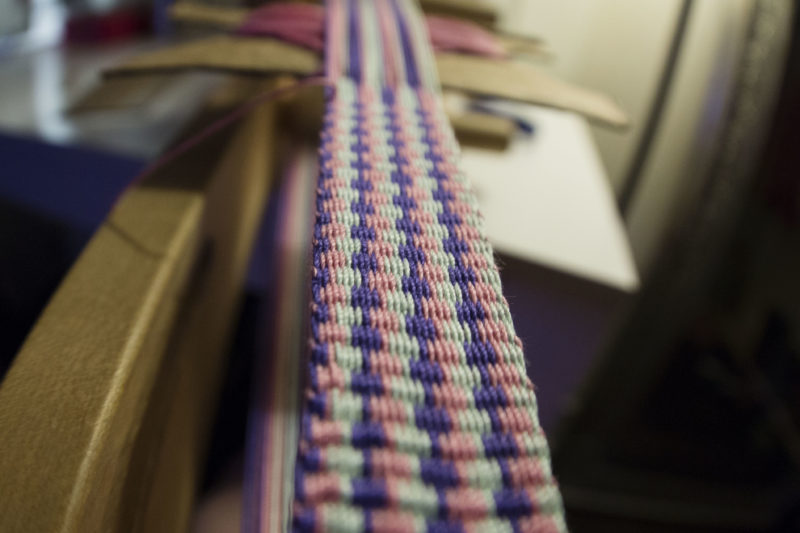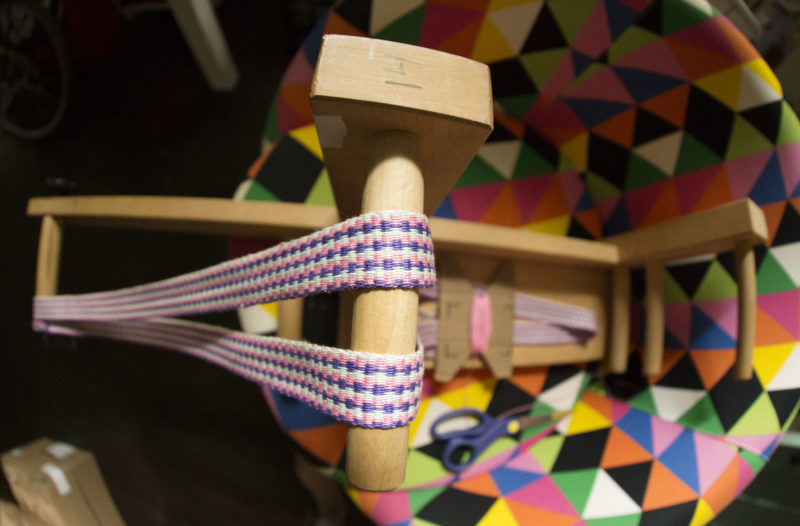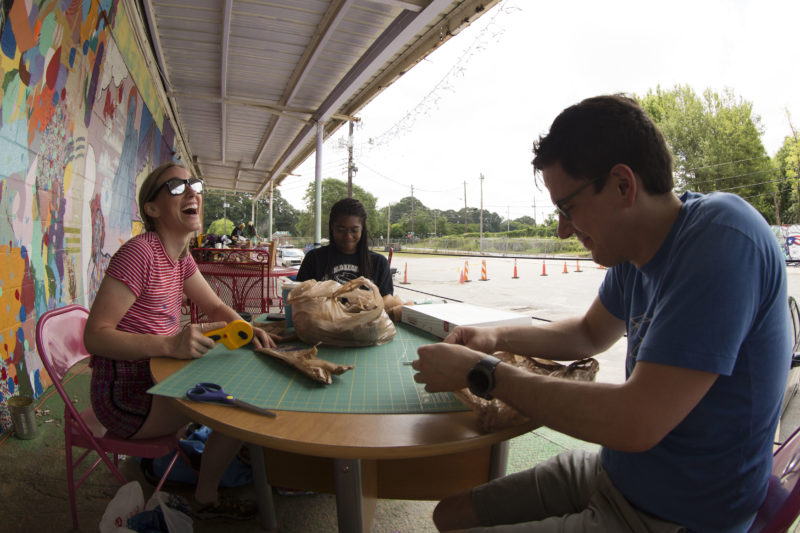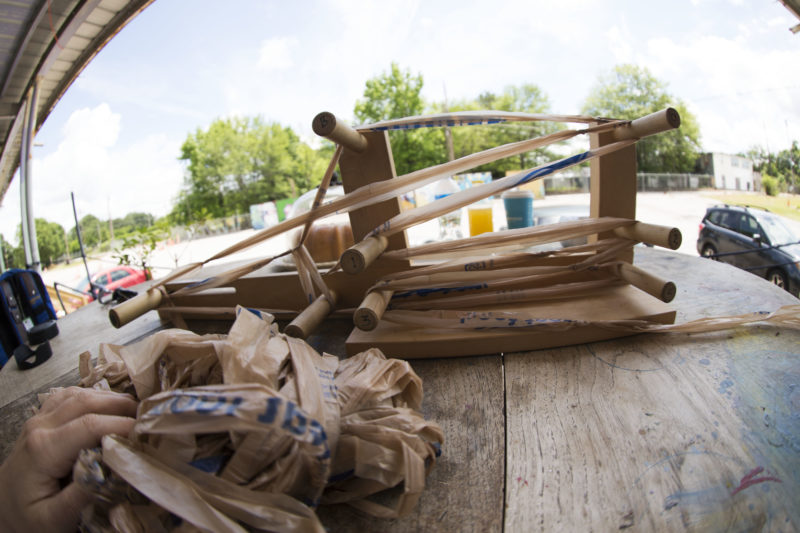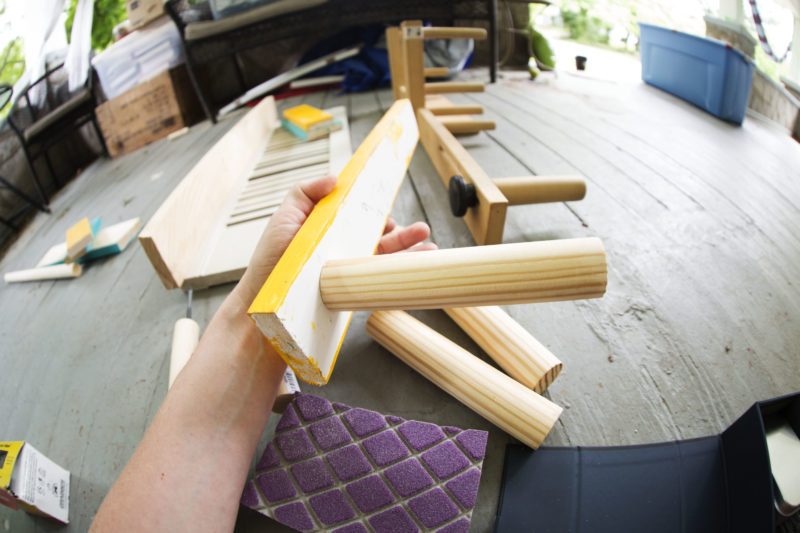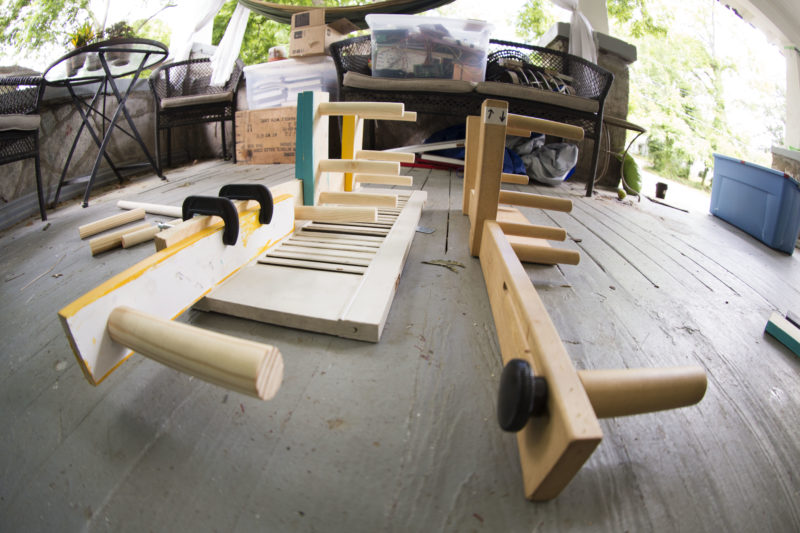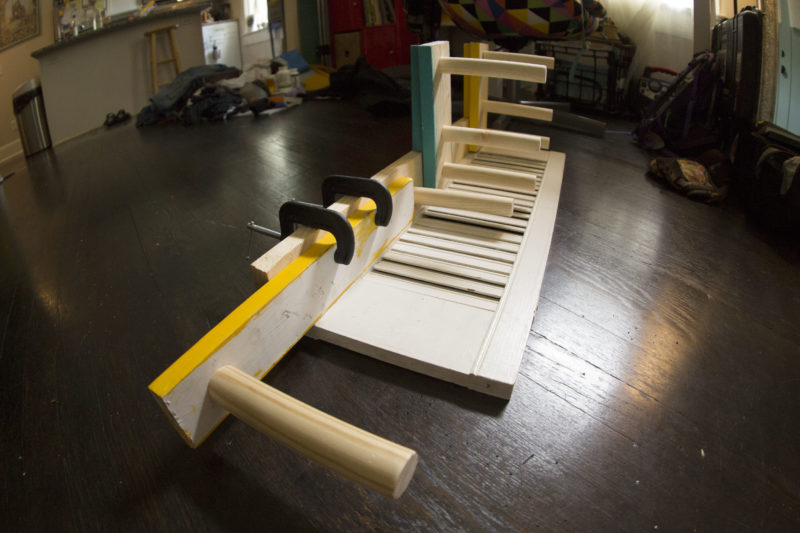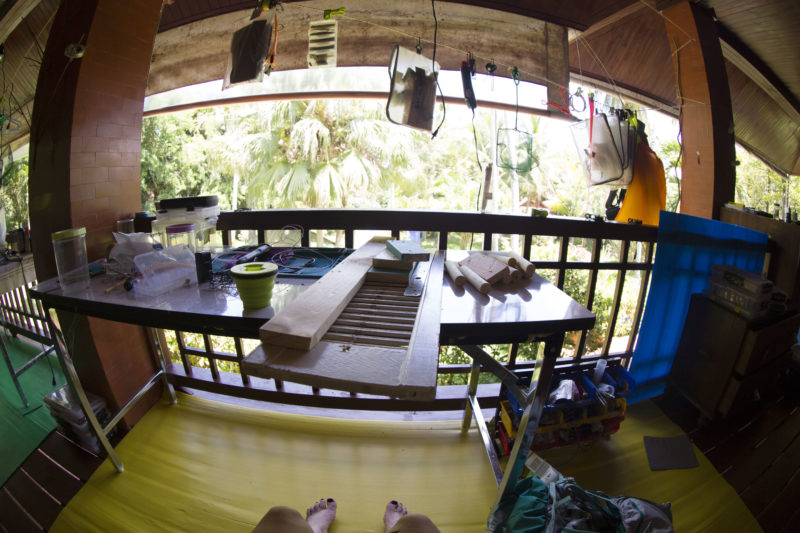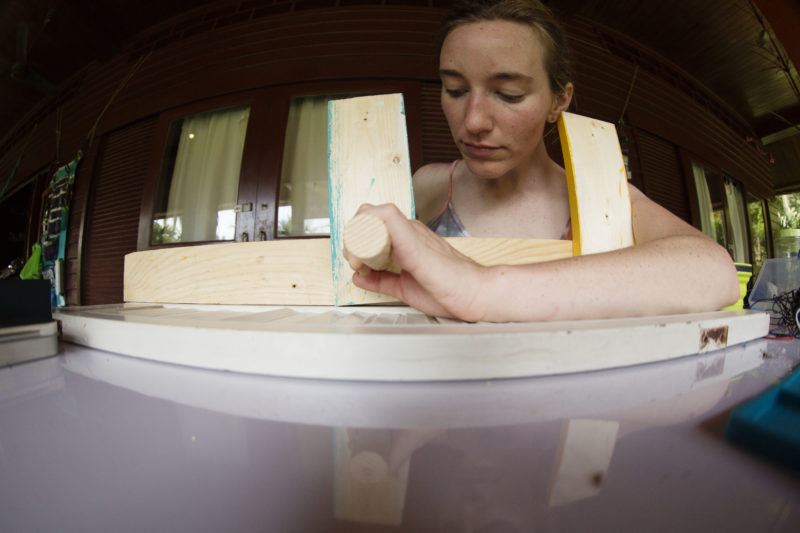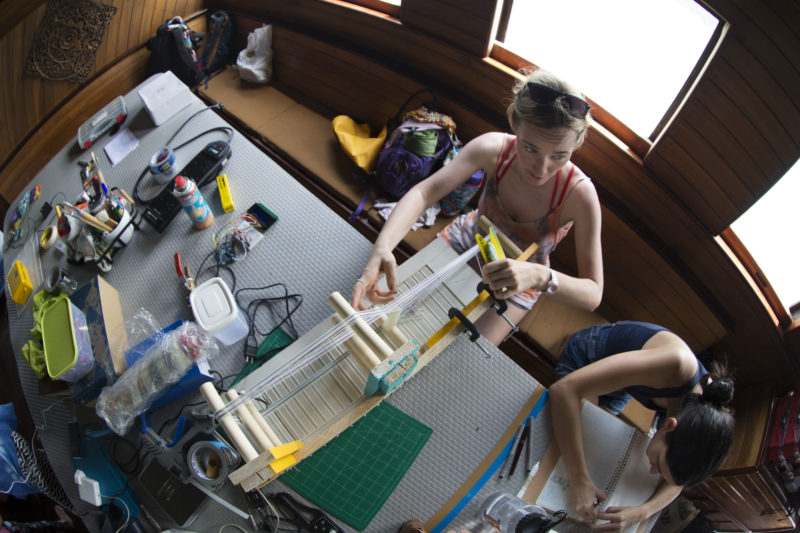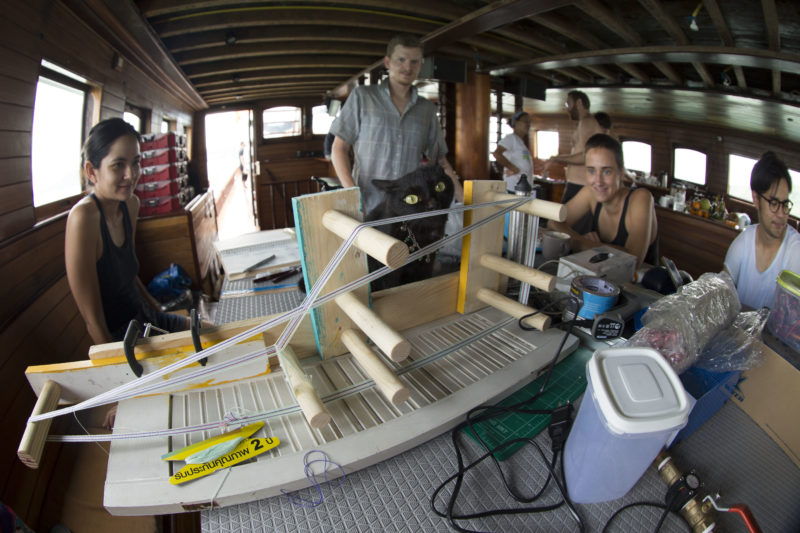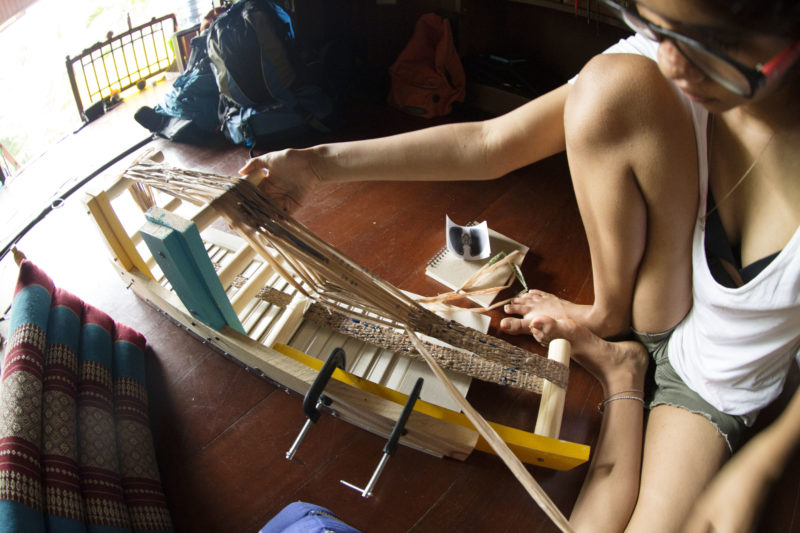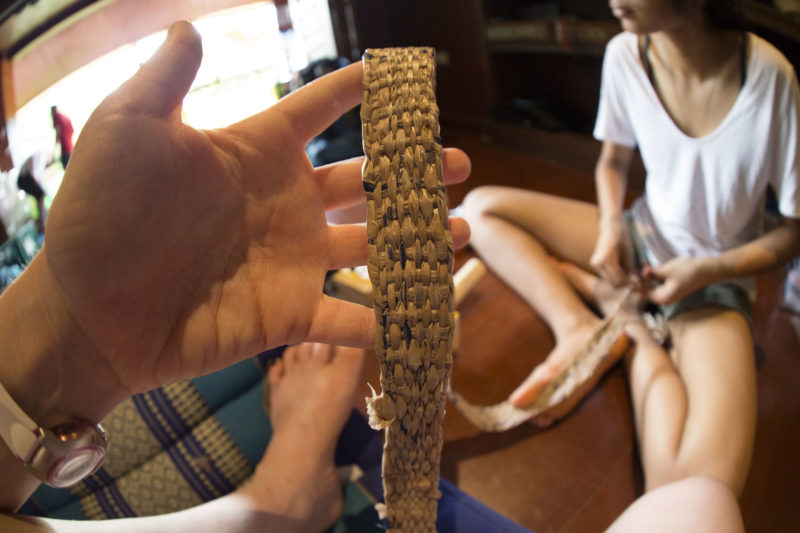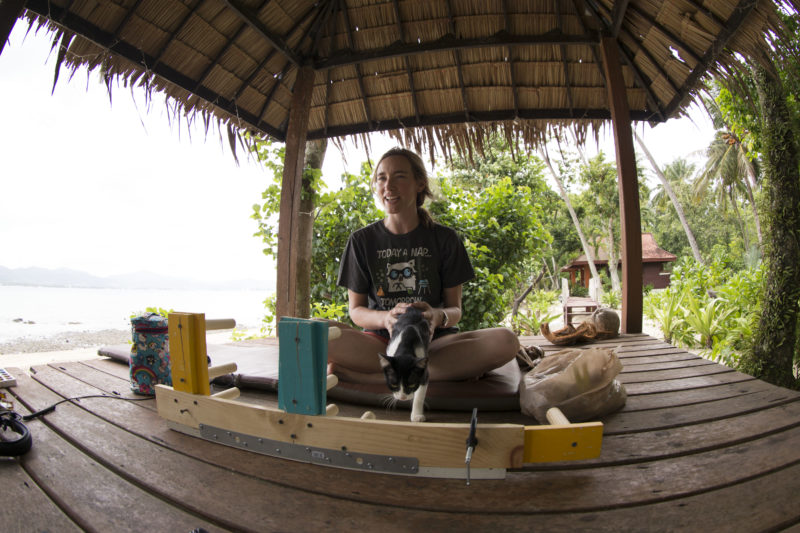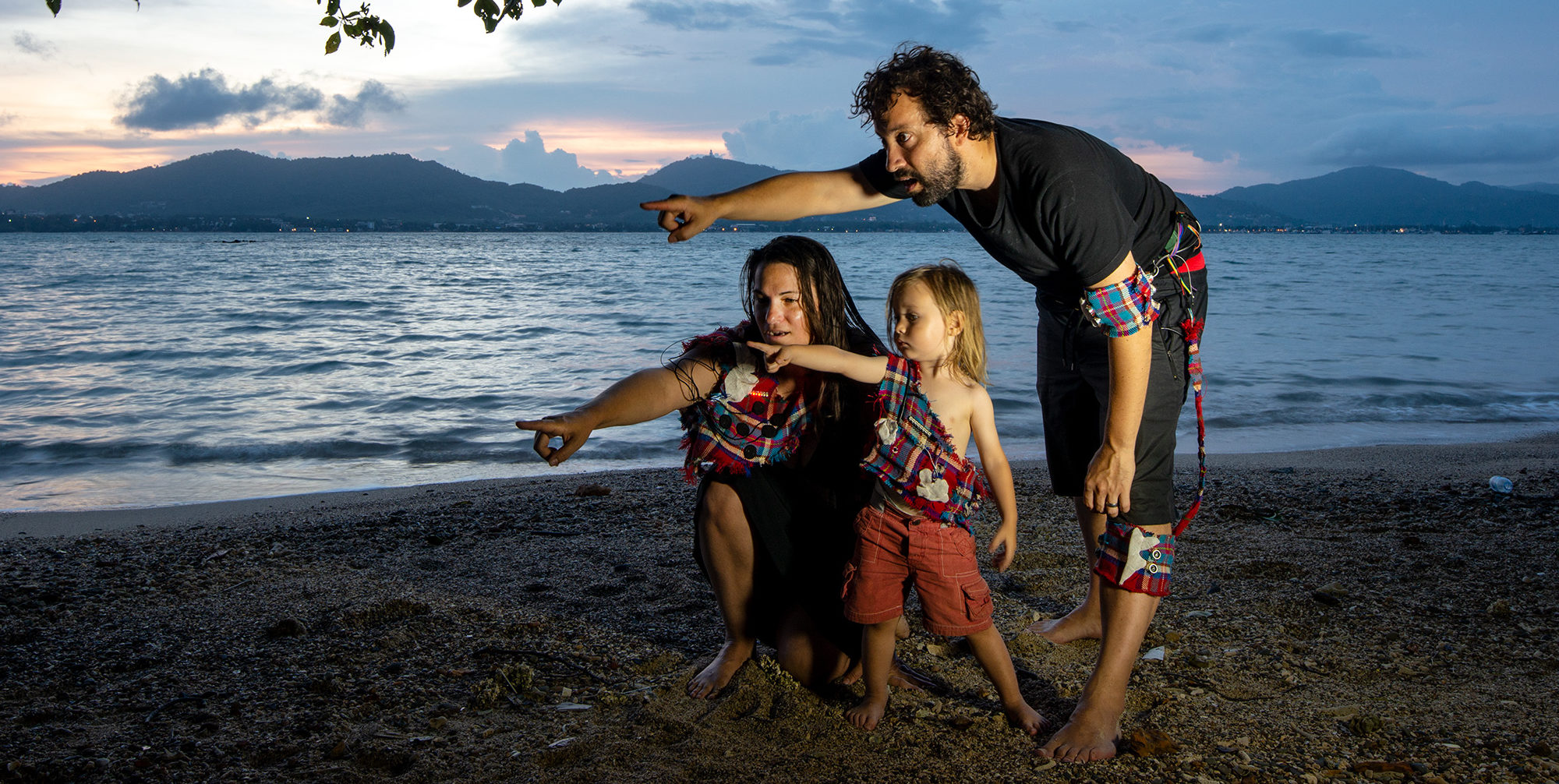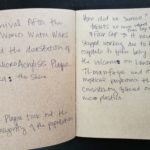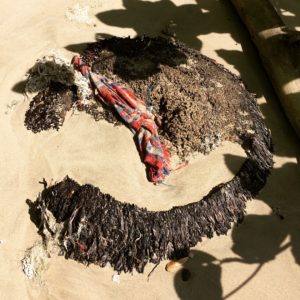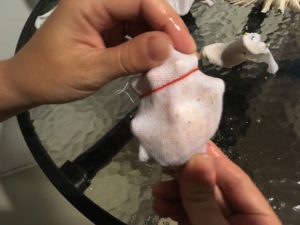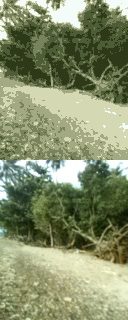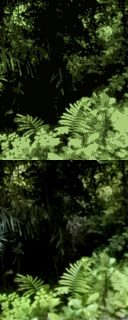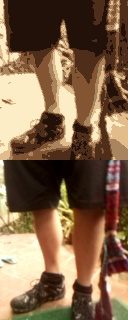I came to Dinacon with the intention of writing and reading for TIGER, the next performance in my life-long project, The Unreliable Bestiary – a performance for each letter of the alphabet, each letter represented by an endangered animal or habitat. So far my collaborators and I have made MONKEY, ELEPHANT, WOLF, and BEAR. I’m aiming to have TIGER ready by Fall 2019. Here are some raw excerpts from what I was writing.
June 5 2018 Tuesday
Flying to Hong Kong. 12 hour layover before flying to Phuket. Then a 2 hour taxi to Chalong Pier. And then I wait for a boat. And then I take a boat. Out to an island. Koh Lon. That’s the island. To the Baan Maai cottages. I hope this is how it all works out. We flew past Churchill Manitoba and Hudson Bay. I have a card of a polar bear cub with me. We flew next to Lake Michigan and over Lake Superior. Now we must be somewhere… Northwest Territories? Siberia? Well. We’ve only been flying for 3 1/2 hours. It’s going to be a total of 14 hours and 50 minutes. We pulled away from the gate around 3:35 PM Central Time. We taxied for a long time. Finally took off at 4:10 PM. So we should be flying until 7 AM Chicago time, or 8 PM Hong Kong time. I’m glad to be sitting next to the window. Wait… Is my seatmate going to pee? No. He’s gone back down into his seat. Seems that he’s jacking into a movie. He doesn’t speak English. The pilot or copilot sounds Aussie. The stewards and stewardesses speak English and Chinese, Maybe other languages. The man next to me was reading a Chinese newspaper and the stewardess would switch to speaking in Chinese when talking to him.
Yesterday was very full. And so was this morning. Everything gets scaled to the expectations of the journey. If you expect a 16 hour flight, the 2 Hour drive up to Chicago isn’t a big deal. The hour-long wait in the security line isn’t either, just glad that I gave a three hour cushion. After the long bus ride to the terminal and the security line – I only had 45 minutes until boarding. But here I am with 275 passengers and I don’t know how many crew. Boeing 777.
June 8 2018 Friday
T-shirts worn by Chinese tourists; CREATE ACTICITY enjoy leisure (no typos there – that’s what it said). A small child with a black T-shirt wandering on the beach. In white block lettering the shirt says I am drunk. But I look again and the shirt says SLAM DUNK.
Numbers. 900 languages in India. How many in North America? 300 before European invasion – according to Robin Kimmerer. Tigers can do it – sexual relations – 50 times in one day? Two days? How does it work? Need to look this up.
“She announces her fertility by repeatedly scent-marking the borders of her territory with a pungent, thick, musky fluid and roaring lustily until one or more males respond. The embodiment of liberated lascivious female desire, she allows them to fight without quarter for the privilege of enjoying moonlit nights and torrid days of violent unremitting passion, in which the victor may mount her as many as 50 times. Even today, Rajasthani men boasting of their masculine potency refer to themselves as ‘two-legged tigers.’” p. 36 Tiger by Susie Green (Reaktion Books)
A tiger population can bounce back pretty quickly if there’s enough food. And for there to be enough food, they need to have solid habitat. (There is a cat lying on my feet right now. I like it. He’s cleaning himself. His name is Turtle.) I’m sitting on the porch of my cabin. I’m on Koh Lon. Which I think translates to Lone Island. My cabin is surrounded by palm trees, myna birds, and at 6 AM this morning, a huge amazing chorus of cicadas. Totally amazing. A slow, very slow crescendo. Five black heron-ish birds on the beach. There was a lot of wind. The tiniest bit of rain. Threats. Here at the beginning of the monsoon season.
Yesterday, in the Hong Kong airport, there was heavy rain. We had to be bussed out to the airplane. While standing in line, the stewardesses would check your boarding pass and hand you a small plastic bag which was filled, packed, with the flimsiest of throwaway ponchos. They packed us on two buses. When we were coming up to the checkpoint, I could see the rain coming down in buckets. Like a fire hose. The flimsy ponchos– they really felt like slightly, barely organized saran wrap–as if you were a bowl of cold tuna salad and the purpose of the poncho wasn’t really to keep off the rain (or torrential downpour depending on the moment) that was actually intended to simply prevent the other food in the fridge from becoming infected with your fishy onion stench. They packed us onto the buses. The buses were under an overhanging roof – so no threat of the rain here. But standing there on the bus looking at the rain absolutely DRIVING DOWN out of the sky – well, I put on my saran wrap. Most other people did too. But then, as we stood there, on the bus, more and more people packing on, the rain let up. And then the rain stopped. Finally the bus drove out to the plane. Right up to the canopy stairway that led up to the airplane door, so when it came down to it, there was about… 6 feet that was unroofed, uncovered, unprotected from the sky. 6 feet and hundreds of bags of organized saran wrap, liberated, free and wild and open and loose–this saran wrap could go back to its natural habitat: the Pacific ocean Northern Gyre. Great garbage patch of the north. Does the Indian Ocean have a gyre? Are the waters in Hong Kong the China Sea? How does this work? I can talk to Mr. Google I guess.
I drove up to O’Hare on Tuesday morning. Left at 10:15, got there by 12:15, driving 80 most of the way. (Oh – the cicadas have started again– it’s very subtle– who starts it? Why does it start? What is the initiating factor? Barbara Ehrenreich quote “an emergent quality.” That’s what was happening at 6 AM. I don’t often find myself paying attention to a sunrise. Actually there was no sun this morning. Just a brightening of the clouds and the ocean. Chalong Bay. Cicadas. Ocean. Herons. Wind. Palms in the wind. Myna birds. Cats. Bugs are holding still in the wind.) It took a little longer than usual to park. The train–shuttle to the terminals is on the fritz, so, buses to the terminal. The international terminal was last. Cathay Pacific. Hardly any line. Checked my bag all the way to Phuket. Makes me a little nervous. 12 hour layover in Hong Kong– will the bag make a dash for freedom during its 12 hours in non-transit? But I go with it. I have prepared for this journey. A 14 hour and a 50 minute flight from Chicago O’Hare International to Hong Kong… whatever that airport is called. I have a seat next to a window: 69K. When I check in to claim my seat, the chart doesn’t have many openings. There is an open row at the back, in front of a row of seats that are all marked “U”. I look at the keys. What does “U” mean? “U” stands for unaccompanied minors. Ah. A row of lost children. This, clearly, was a wildcard. Which way could it go? Terrified, silent, wide eyed children? (Possibly the best kind of children on long plane trips.) Loud belligerent tweens, nonstop computer games, kicking the seats in front of them. Or babies that scream. For 14 hours straight, with the 50 other minutes spent drinking water because they are so parched from the screaming. Well, as it turns out, the row designated reserve for unaccompanied minors is actually just old folks on their way to Kolkota. They are quiet. They are sleeping. They’re watching action movies with headphones. There is a Chinese man that sits down next to me. A large round Indian woman sits next to him on the aisle. Across the way is her husband. He is also large and round and has dark circles under his eyes. The man next to me has unruly gray eyebrows. Lots of personality. He has gray hair. Not quite a flat top but close. He’s pretty low to the ground. A collared sort of striped golf shirt. He does not speak English. I do not speak Mandarin or Cantonese or whatever they mean when you say “I don’t speak Chinese.” He reads his Chinese newspaper. I give him my chocolate bar. He gives me some peanuts.
There are moments in the itinerary that I’m anxious about. These are moments that I might label “unknown.” Or, “things I’ve rarely done.” Like Getting a Taxi. Or Getting A Boat That Will Essentially Be A Taxi. Or Going Through Immigration and Customs In a Foreign Land. Or Finding the Hotel That is Supposed To Be In the Airport, And it Pretty Much Is In The Airport, But You Still Have To Go Through Immigration To Get To The Airport Hotel. That was brilliant. A 12 hour layover. Five hours of solid melatonin induced sleep and then waking up at 2:30 AM, because it’s really 1:30 PM… and why, for God’s sake, are you asleep? Wake up. There are some flashes in the dark, and I think to myself, “Lightning?” And I’m surprised. Because it all feels so hermetically sealed. So canned and bottled and completely free of the uncontrolled. It is 70°. Probably 68. So everyone has to wear a light sweater. There is a low hum. A fan. A motor. A mechanical drone to bring us back to the swoosh and slosh of the womb. Ebbing tides. In the morning. At 5:30, I head back to the terminal. It’s pretty quiet. The only time I’ve really had to wait was the security line in O’Hare. But it worked out. Otherwise – everything’s been fast and smooth. I have not had to take off a single shoe. I have not had to take off a belt or unpack a bag. I did have to remove one laptop. So everything is quiet. Everything is white and metallic and bright. Everything is both in English And Chinese. There are beautiful blond families and advertising. There are beautiful square jawed Chinese men and women. There is the dream of luxury and leisure. And there are expensive watches. Images of expensive watches that are – what – 4 feet across? So there’s the picture of the Bulgari watch. On a bright white background. All glowing, lightbox. Lit from within. And under the watch is a sign that says TYPHOON ADVISORY, FORCE 1. A hurricane bearing down on the Hong Kong International Airport?Should I be worried? Should I figure out how I can elevate my lifestyle so I can achieve this magnificent timepiece – a mark of excellence, a mark of the very best. A watch that is powerful. A watch that is a force of nature.
June 9 2018 Saturday
What does typhoon mean? What does Force 1 mean? Is it related to hurricane categories? Will they eventually give us Category 6 with Category 5 becoming ordinary? Will the coming years bear Category 7 or 8 what would a Category 8 hurricane be? 360 mile/hour winds? Raining knives. Tsunamis as a matter of course? Who will be our heroes? Who will save us? The last hope. Will Turtle or his father, Colonel Turtle lead us? Will the Pacific Reef herons lead us? The mynabirds. The hornbills. The palm trees. The coconuts. Pythons and pit vipers and hermit crabs. The wind. The rain. The sky. The ocean. The Buddha on the mountain. The bros that just arrived for their weekend with their dance music.
There are bros everywhere. All around the globe there are bros. And some of them are here. I have a cat in my lap. Named Turtle. I love this wind. It’s low tide right now. So what about heroes? Based in stories. We tell ourselves what we can do and what we can’t do. And this limits us. Heroes (are stories about) throwing out the limits– stepping outside the boundaries, outside the box. Beyond our mortal selves. Hanuman – bigger than a mountain. Smaller than a mouse. Saving the world. The lynx water-god. The amphibious Tiger God. They are not friendly. They are not happy. They have enormous power and that power can go in every direction. When you are sitting in a fantasy… well, no, not the fantasy, sitting in the real world but surrounded by all the elements of what people fantasize about: beach, palm trees, ocean, mountains in the distance, birds calling, Last night I saw my first flying fox. A bat as big as a red tailed hawk. Fuck. Amazing. Also: hermit crabs with their vast array of varying show houses. And then two very big crabs that scuttled into big sand holes. Where am I?
The mornings have been so nice. When the sun actually crested the mountain today– just for a little while– there was a time when all the color came into the world. Pinks and teals and tangerines and aqua greens/blues… I had looked down to read for a little bit, and when I looked up– the world had gone from the latent quiet potential of grays and blacks and silhouettes and shadows to full kinetic color. Like someone had flipped a switch. The cicadas. A Hornbill in a tree 15 feet above me. The cats returning to hunt and mew and jump into my lap.
Just got back from a tidal walk with Andy, scouting for a drone shot with mangroves. The tide was coming in, but still low enough to walk out along the rocks and sand, out past the Muslim Village, around the bend. The ocean side of this island was pounded. Devastated by the 2004 Christmas Tsunami, this side was flooded. LOTS of garbage and debris left over. Today, less, but still plenty of garbage. Here are some of the things I saw: a flip-flop (left foot) covered with barnacles. A fan, somehow all the parts within a couple of yards from each other. Big woven plastic sacks for grain. A motorcycle helmet. A dead puffer fish as big as a motorcycle helmet. A big chunk of thick green rope. Plastic bags. Plastic water bottles. Beer cans. Beer bottles. Broken glass. Netting. A dead ray with it’s wings cut off.
Maybe today I will write about Monster, Kris Schwartz and the night of 1000 orgasms? Ha ha. 4. Tigers. 50. What? How? Why? When does it flip into pure mechanics? Maybe it’s always mechanics? Pure electrochemical biology. She worked at the Lifetime Channel as an editor. Her soft stomach was crisscrossed with scars. Lots of long scars, making a kind of raised skin network. I asked her about them. She didn’t want to talk about it. Her fallback, resting state was dour and depressed. She didn’t seem to stand out in any way. She had dirty blonde hair. Her shoulders hunched. She could be coaxed into a kind of braying, chatty humor –– and she assumed, well, of course if we’re having this frank talk– we are talking honestly here, right? Well, if speaking frankly– of course you’re going to agree with her. And that whine, that… whine, with its assumed,”We’re all friends here” talking about the agreed-upon ways of the world– this whine was soaking in the assumption that the world was fucked. That – yes, we can make jokes about it, you know, to lighten the load– but through and through, deep down, at the core of all humanity–everybody everything is darkness. Everything was fucked. And there was nothing they could change that fact. And apparently, she wanted to go out with me. She didn’t tell me directly. She told me through a friend. I’d never met her. I knew nothing about her. But somebody wanted me. Sadly, that’s all I need.
We went to a bar. We drank beer. She talked about her favorite bands. She said she wanted to sleep with me. We went to her apartment. She had a cat named Monster. He was a pretty nice cat. At first. And then he was less than nice. He was big. Maybe he was gray. Whatever color he was, he weighed over 30 pounds. Kris’s apartment had a small entryway, a small kitchen. Small bathroom. And a bed. Kris lived in this small place with her big cat. They had figured out how to live together. But if you brought in anyone else– the balance was off. I think Monster slept on the bed with Kris. So when I slept over– Monster was shoved aside. Onto the floor and the barely used cat bed. Monster did not like this. So the first night we went to bed– to her bed, to Monster’s bed, Monster the mid size predator, not a 500 pound tiger, Monster the 30 pound house cat who had been displaced from his bed. Kris did not want to sleep. Kris wanted to have sex. Kris wanted to come. Over and over. And she wanted me to come. Over and over. Maybe there are people out there who know what normal is. I have no idea. Is it normal to have sex and fall asleep? Let’s say you’re with someone for the first time. It could be kind of great. It could be exciting and new and thrilling. I’ve heard stories of famous athletes sleeping with literally thousands of women. So, okay, so that’s one kind of normal. I guess. You’ve got Tom Brady and Gisele. First night. How many times? Now for these two, I’m not sure if they’ve even actually had sex– like I bet they bought those kids online. I can’t imagine them spending any time not looking at themselves in the mirror. Or working on his website – how to live forever and for a small monthly fee, he’ll tell you how you can live forever too! How about Wilt Chamberlain– a legendary lover. Or Genghis Khan. Genghis Khan. I am not Wilt the Stilt or Ghenghis or Tom or a two-legged tiger.
Ok. So it’s somewhere in the middle of the sex and the not sleeping and the bleariness. I get up to pee. Standing in the doorway between the bed and the toilet is Monster the 30 pound predator. I have to step over this enormous cat. He is clearly not having it. He is a step away from bristling and hissing. I am naked. I have to make a decision about my dangly cat-toy-ish bits which may or may not entice Monster the 30 pound predator and his claws. I survive the passage. I come back to bed. There is Kris. Mousy. Trying to smile. Trying to get over her shyness. Trying to put on a show, get out past her usual desolation … or at least put on a funny front where we can join, meet each other in mutual darkness.
Just got back from a 5 1/2 hour interruption. Just in time for the family down the beach that likes having babies, playing shitty music, and grilling. Grilling. A verb. At 12:30 Andy got his drone going and we shot some mangrove stuff. The roots that come up, out of the sand or the mud. Like a small field of them. Oh God… the wind has started. It’s so good. It feels so good.
The first morning when I woke up early here, I lay out on the porch, in the dark, 5 AM. And the wind was up. And it’s warm. It’s not hot outside at night, but it’s not cool. But the breeze comes in. And it’s all over your body, very gentle. And for a little while, with the cicadas, very slow dawn, the herons walking on the beach in silhouette –an emergent quality–the breeze, the perfect wind on me–the world as a lover. Yes yes yes–it can smack you down too. So can a lover. But this felt so nice. So soothing and perfect. It was a very hot day with sun – so even hotter. So the wind, now, quiet, on the porch with Turtle the forgiving kitten– Ah. So nice.
Deke Weaver
unreliablebestiary.org
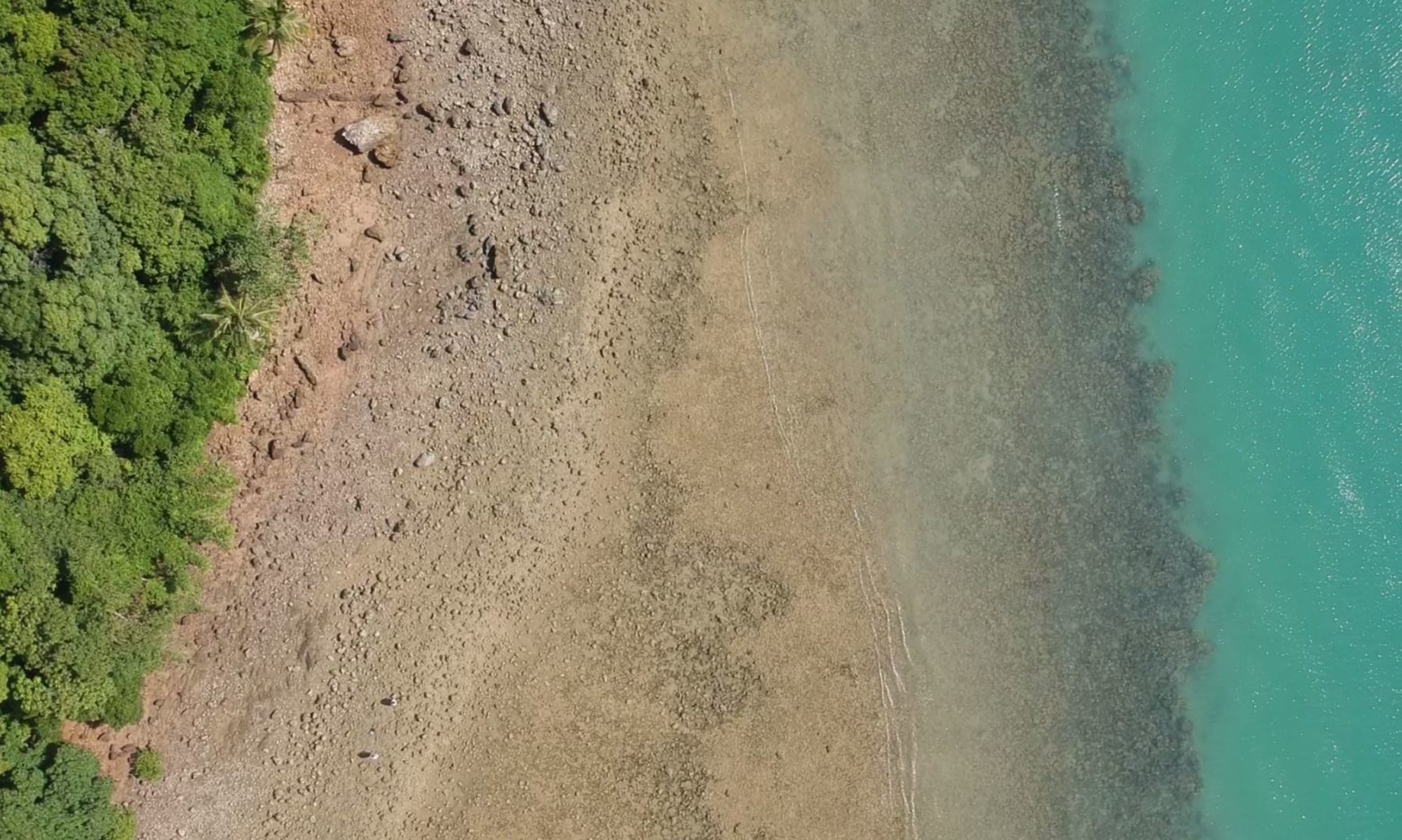


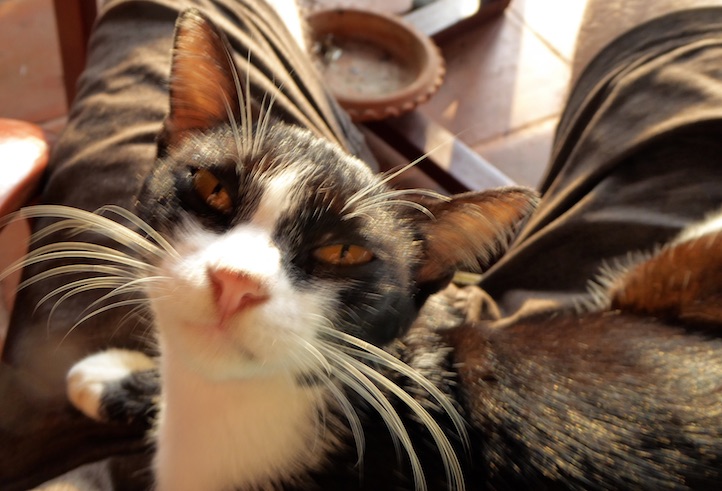
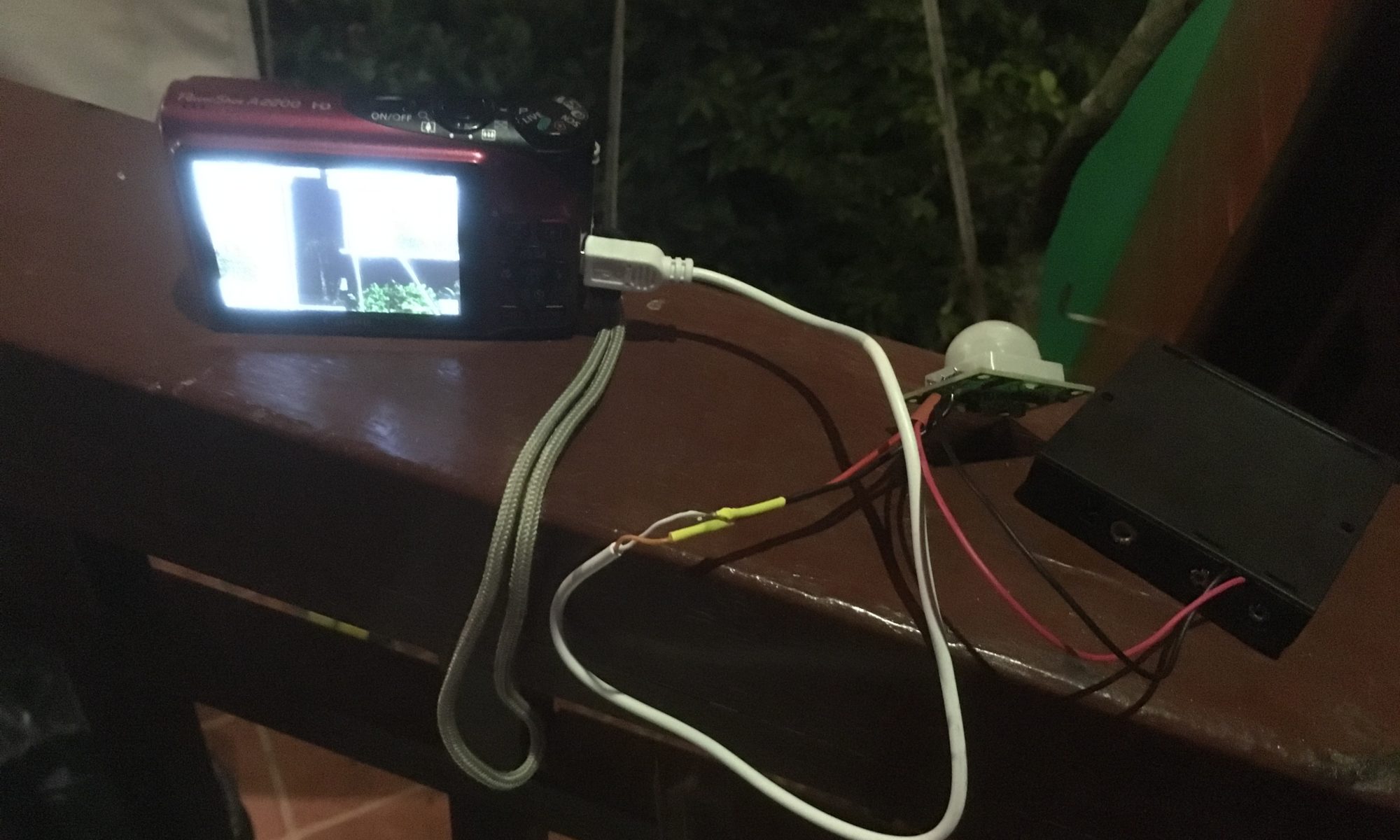








 PIR Motion Detector – photo credit: SparkFun Electronics
PIR Motion Detector – photo credit: SparkFun Electronics


